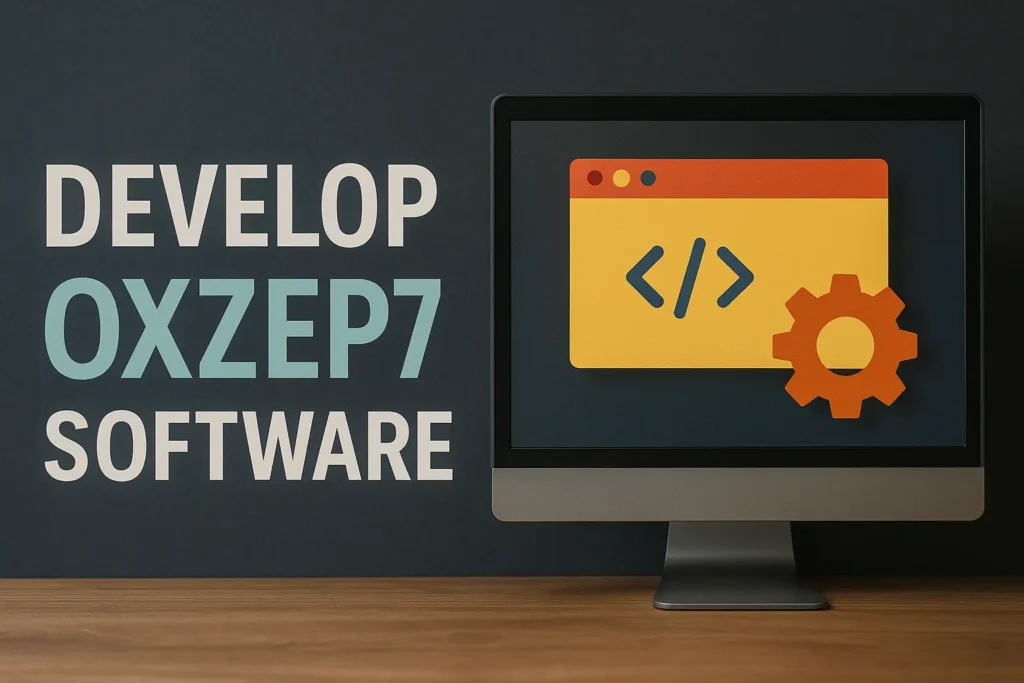In today’s rapidly evolving tech landscape, businesses and developers are consistently looking for efficient, scalable, and secure solutions. That’s where the concept to develop OXZEP7 software comes in. Whether you’re a seasoned developer or a tech startup aiming to create a powerful tool, OXZEP7 offers a flexible platform that allows you to build high-performance applications tailored to niche requirements. This guide will walk you through the key components, architecture, tools, and steps necessary to develop OXZEP7 software in an SEO-optimized and user-centric manner.
What is OXZEP7 Software?
OXZEP7 software refers to a specialized framework or system designed to support modular development in enterprise-grade applications. While the term may not be mainstream yet, the approach behind it emphasizes performance optimization, data security, and cross-platform functionality. Whether it’s a desktop utility, cloud-based SaaS, or AI-backed platform, to develop OXZEP7 software is to build a custom solution with future-ready architecture.
Key Features When You Develop OXZEP7 Software
When planning to develop OXZEP7 software, here are some must-have features:
- Modular Design: Encourages separation of concerns for easier debugging and scalability.
- Cross-Platform Compatibility: Works on Windows, Linux, and macOS environments.
- Advanced Security Protocols: Integrated encryption layers for secure data handling.
- Cloud Integration: Easily deployable to cloud servers like AWS, Google Cloud, or Azure.
- API-First Approach: Facilitates easier integration with third-party tools and services.
Incorporating these features during your OXZEP7 software development phase will future-proof your application.
Step-by-Step Guide to Develop OXZEP7 Software
Define Your Software Requirements
Before you begin to develop OXZEP7 software, it’s crucial to clearly define your objectives. Identify:
- End-user needs
- Platform requirements (web, mobile, desktop)
- Features and functionality
- Compliance needs
Choose the Right Technology Stack
Depending on your requirements, choose tools and frameworks like:
- Frontend: React, Angular, Vue.js
- Backend: Node.js, Python (Django/Flask), Ruby on Rails
- Database: PostgreSQL, MongoDB, MySQL
- DevOps: Docker, Jenkins, Kubernetes
OXZEP7 architecture supports containerization, which improves deployment and scaling.
Plan Software Architecture
Map out a scalable and modular software architecture. Use tools like:
- UML for visual representation
- Microservices for modular development
- REST or GraphQL for APIs
A solid architecture is vital if you want to successfully develop OXZEP7 software.
Start Development in Phases
Use Agile or Scrum methodologies to divide the development into sprints. Include:
- UI/UX development
- Core functionality programming
- Integration of third-party services
- Automated testing setups
This ensures continuous improvement and shorter delivery cycles.
Testing and Debugging
Use CI/CD pipelines for automated testing. Cover:
- Unit Testing
- Integration Testing
- System Testing
- Security Audits
OXZEP7 frameworks benefit from continuous monitoring and feedback.
Deployment and Monitoring
Once your OXZEP7 software is ready, deploy it on a secure cloud environment. Use tools like:
- AWS CodeDeploy
- Azure DevOps
- Docker Swarm
Also, implement logging and monitoring tools like Prometheus, Grafana, or New Relic.
Best Practices to Develop OXZEP7 Software
- Keep code clean and well-documented.
- Use version control (e.g., GitHub or GitLab).
- Secure your APIs with OAuth2 or JWT.
- Regularly update third-party libraries.
- Gather feedback from beta users before full release.
These best practices ensure that your OXZEP7 software is not only functional but also sustainable and secure.
SEO Optimization When You Develop OXZEP7 Software
To improve visibility, optimize your software documentation and website with:
- Keyword placement (“develop OXZEP7 software”) in titles, headings, and meta tags.
- Alt texts for images with target keywords.
- Fast-loading pages and responsive design.
- Schema markup for FAQs and code examples.
- Quality backlinks from tech blogs and forums.
An SEO-friendly presence improves trust, user reach, and organic traffic for your software brand.
Final Thoughts
To develop OXZEP7 software is to embark on a journey of technical innovation and problem-solving. With the right tools, methodologies, and a user-first mindset, you can create a robust, scalable, and SEO-optimized application that stands the test of time. Whether for enterprise solutions or niche markets, OXZEP7 offers the flexibility and power to meet modern development needs.
FAQs: Develop OXZEP7 Software
What programming languages are best for OXZEP7 software development?
Languages like Python, JavaScript, and Java are highly recommended due to their scalability and ecosystem support.
Is OXZEP7 software suitable for startups?
Yes, its modular and scalable nature makes it perfect for startups needing flexible and cost-effective solutions.
Can I develop OXZEP7 software with open-source tools?
Absolutely. Many open-source frameworks and libraries are compatible and encouraged in OXZEP7 development.
How long does it take to develop OXZEP7 software?
Depending on complexity, it can take anywhere from 3 to 12 months, including planning, development, and testing.
Do I need DevOps skills to build OXZEP7 software?
DevOps is not mandatory but highly recommended for smoother deployment, scaling, and monitoring.
